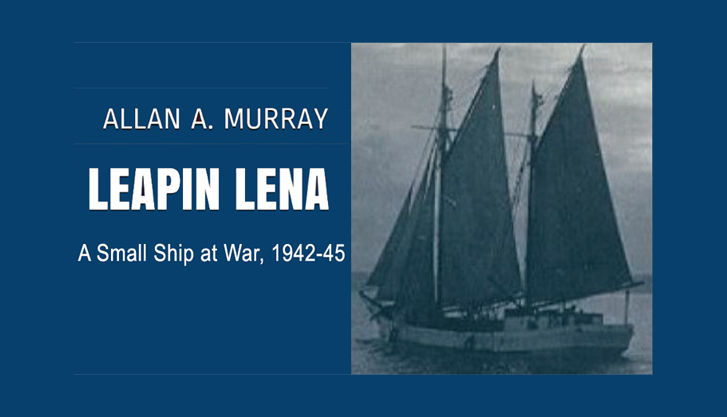James Ochoncar, 17th Lord Forbes, and the Expansion of Castle Forbes
- Bart Forbes

- Sep 16, 2021
- 6 min read

James Ochoncar Forbes was born on the 7th March, 1765, as the eldest son of James, 16th Lord Forbes, and Catherine the only child of Sir Robert Innes of Orton and Balvenie, 6th Baronet, and Dame Marjory (or Margery) Winram Innes. As Master of Forbes, James was appointed a Burgess of Aberdeen in 1770, at the age of 5. His younger brother, Robert Alaster Cam, received the same honor in the next year at the same age.
James Ochoncar enlisted as an ensign in the Coldstream Regiment of Foot guards in 1781 at the age of 16 and was promoted to Lieutenant in 1786. In June 1792, the Master of Forbes married Elizabeth, eldest daughter of Walter Hunter of Polmood (died 1796) and Lady Caroline Mackenzie Hunter (1736-1791.) They were married at Crailing House, which was left to Elizabeth when Hunter died in 1796.

As a Senior Lieutenant in 1793, he joined the first battalion of the regiment under the command of Prince Frederick, Duke of York and Albany (1763 – 1827), second son of King George III. Forbes fought in the Battle of Famars on May 23, 1793, and in the Battle of Lincelles on August 17, 1793, during the Flanders Campaign of the War of the First Coalition. He advanced quickly through the ranks: in August 1793 he was promoted to Lieutenant-Colonel and to the brevet rank of Colonel in May 1796. By 1799, the Master of Forbes commanded the Grenadier company of the Coldstream regiment and in April 1802 he was promoted to Major-General.
In 1795, Forbes was elected to the Nulli Secundus Club, an elective officers’ dining club for the Coldstream Guards who had completed a minimum number of years of service. Thirty years later in 1825, his sons James and Walter were also elected to the club. “Nulli Secundus” is Latin for "second to none" and was the motto of the Coldstream Guards.

On July 29, 1804, his father James, 16th Lord Forbes, died and James Ochoncar became the 17th Lord Forbes. The new Lord Forbes was elected a Representative Peer of Scotland in that same year. As the new owner of the Forbes estate, he embarked on a vast landscaping project that included planting almost seven million trees between 1805 and 1815. The new Lord Forbes also started planning a new home for his family at Putachie. In 1807, he hired architect John Paterson who developed plans for a building on a new site below the old house due to drainage and landscaping factors. However, Lord Forbes wanted to expand the current house on the same site and dismissed Paterson.
His plans were placed on hold in 1808 when he was promoted to Lieutenant-General and named second in command of the Mediterranean army under Sir John Stuart, Count of Maida (1759–1815.) According to his obituary, Lord Forbes “took part in the operations which attempted to replace the Bourbon King on the throne of Naples or the Two Sicilies, from which he had been ousted by Napoleon.” (Urban, Sylvanus; “Obituary: Lord Forbes,” The Gentleman's Magazine, July 1843.) In 1808, he was promoted to Colonel of the 3rd garrison battalion and in 1809, he was given command of the 54th Regiment.
On May 16, 1809, he received a letter from William Pitt Amherst, lst Earl Amherst (1773-1857), who had been newly installed as a minister at the Court of Palermo in Sicily: “I have many thanks to return your Lordship for your kind letter and for your congratulations on our arrival in Sicily. We come here at a very critical and interesting moment, when the prospect opens of the restoration of the Kingdom of Naples to its rightful owner and principally by means of a British Force.” (Forbes documents now maintained by the National Archive of Scotland; Tayler, Alistair and Henrietta; House of Forbes, Third Spalding Club, 1937.) Amherst added a personal note: “Lady Amherst and I have both been in Italy but Sicily is new to us. All that we have yet seen of Palermo delights us . . . I assure you it would give us the greatest pleasure to have an opportunity of seeing you here and I hope you will give us that satisfaction unless indeed you should obtain a footing in Naples and then we will come and see you.” (Ibid.)
In 1811, Lord Forbes returned from Sicily and deployed to Cork, Ireland, where he was placed in command of the eastern districts. In 1816, he was given command of the 21st or Royal Scots Fusiliers and was promoted to General in 1819.
While he was stationed in Ireland, Lord Forbes continued with his plans to expand of Putachie House into the Castle Forbes known today. He wanted to integrate parts of the old house into the new. A 1741 survey commissioned for his grandfather James, 15th Lord Forbes, shows the old house with a large round tower to the north and formal gardens slightly to the south and east.
Lord Forbes hired architect Archibald Simpson (1790 – 1847) of Aberdeen. In 1815, he had overseen some of the additions to Druminnor Castle, the former Castle Forbes. He developed plans to incorporate the old house between a square and a round tower on the front. He designed a four-story baronial mansion of Tudorish design with round arches with crenellated towers, a square south staircase with coffered cove and dome; and an elliptical north staircase. He also planned to retain the formal gardens, which became the walled garden for the new house.
During construction, Simpson encountered structural problems and the original section of the house began to crack. Lord Forbes fired the Simpson and hired John Smith (1781 – 1852), city architect for Aberdeen. Smith had designed modifications to Brucklay Castle, Fraser Castle, and Cluny Castle. He also persuaded John Forbes of Craigievar, 7th Baronet, not to demolish the Craigievar Castle tower as planned since it was "one of the finest specimens in the Country of the age and style in which it was built." (Miller, David G.; Tudor Johnny: City Architect of Aberdeen: The Life and Works of John Smith 1781–1852, Librario, 2007.) Smith finished the contruction of the new Castle Forbes in 1818.
Some details of the construction were relayed by Lord Forbes’s eldest son, James, the Master of Forbes, and preserved in a book of notes and photographs created by Hon. Charlotte Forbes, daughter of Lord Forbes, and wife of Sir John Forbes of Craigievar. The notes were signed by the Master of Forbes on September 11, 1867.

Based on his recollections, James reports that the foundation stone was set on June 15, 1815, under the left-hand window in the round room. He noted that a stone shaped in the rough appearance of a bear was found at Logie-Braes of Forbes. According to legend, this was where Ochoncar Forbhasach killed a great bear and won the duchus or ancestral land of the House of Forbes. This stone was originally imbedded in the wall above the back gate of the old house of Putachie but was installed above the fireplace in the front lounge of Castle Forbes. Above the stone is displayed a steel claymore with the inscription “For God, my Country and King James 8th” on one side and “Prosperity to Scotland and no Union” on the other.

Lord Forbes hired the mason Alexander Wallace of Drumnabeg, Cluny, Aberdeenshire, for the stonework. The Master of Forbes assisted in the masonry work and recalled that most of the stones were quarried near Craigpot and the stone for the window molding came from Bennachie. During the six years of construction, the family resided at Bogenthort, now known as Woodlands.
Lord Forbes was finally able to enjoy the house with his family in 1818, when he turned his military servive into a political career. King George IV appointed Lord Forbes as Lord High Commissioner to represent the Sovereign at the General Assembly of the Church of Scotland for the years of 1825 to 1830. In 1829, Lord Forbes was nominated as a Knight of the Illustrious Royal Order of Saint Januarius (in Italian, Insigne Real Ordine di San Gennaro), a Roman Catholic order of knighthood founded by Charles VII of Naples in 1738.

Lord Forbes was also an “old and early” friend of Sir Walter Scott as the famous author notes in his diary on October 16, 1831: “A visit from the Honorable John Forbes, son of my old and early friend Lord Forbes, who is our fellow-passenger. The ship expects presently to go to sea. I was very glad to see this young officer and to hear his news.” This “young officer,” James, Master of Forbes, died in 1835 and was buried in the Leghorn British Cemetery in Livorno, Toscana, Italy. His younger brother Walter, who had served with him at the 1815 Battle of Waterloo, became Master of Forbes and eventually the 18th Lord Forbes.
James Ochoncar, 17th Lord Forbes, died in Bregenz, Austria, on May 4th, 1843. Lord Forbes and his wife Elizabeth had eleven children: James, born in 1795, became a Lieutenant Colonel of the Coldstream Guards and died in Italy in 1835; Caroline Elizabeth marred George Fairholme and died in 1865; Walter, born in 1798, was later 18th Lord Forbes; Catherine, born in 1800 and died in 1808; Charlotte Elizabeth, born 1801, married Sir John Forbes of Craigievar and died 1883; Frederick, born 1803 and died in 1826; William, born and died in 1805; John, born 1806 and died in 1835; Robert, born 1808, joined the private army of the Honourable East India Company (H. E. I. Co.) and married Frances Hodges; Mary Stuart married 1839 Charles Lee Mainwaring and died in 1897; Elizabeth Jane died unmarried in 1891; and Isabella Drummond married Baron Ernest de Poelnitz and died in 1897.




Comments